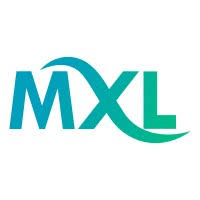
Robinjasper1109
Uploaded on Aug 5, 2025
How to Design Microlearning for Maximum Impact from Day One | MaxLearn In the modern corporate landscape, the pressure to deliver effective, efficient, and engaging training has never been higher. Traditional training models, with their long-form courses and one-size-fits-all approach, often fail to meet the demands of a fast-paced, information-rich work environment. This has led to the widespread adoption of microlearning—a strategy that delivers training in small, highly focused bursts. However, simply breaking down a long course into shorter segments is not enough. To truly unlock the potential of this powerful methodology and achieve maximum impact from day one, you must design your microlearning with strategic intent and a clear understanding of its core principles. The key to designing impactful microlearning is a shift in mindset. Instead of thinking about what information to present, you must focus on what specific task or skill the learner needs to master. Each microlearning snippet should be a self-contained, goal-oriented unit that provides immediate value. This article outlines a strategic approach to designing microlearning that ensures your investment yields tangible results across a wide range of industries, from Finance to Pharma. 1. Pinpoint the Performance Gap, Not Just a Topic The foundation of any successful microlearning initiative is a precise diagnosis of a performance gap. Vague learning objectives lead to ineffective content. To design for maximum impact, you must identify a specific, measurable problem that microlearning can solve. For a team in Banking, instead of a broad topic like "anti-money laundering training," focus on a specific task: "correctly identifying suspicious transaction patterns." In the Mining industry, a general "safety training" topic could be a series of focused snippets on "the 5 critical steps for safely operating a new piece of drilling equipment." This laser-focus ensures that your Microlearning courses are inherently relevant and immediately applicable to real-world tasks, making them indispensable to the learner from the very first interaction. 2. Design for a Single Objective with a "Just-in-Time" Mindset Microlearning thrives on singularity of purpose. Every snippet should have one, and only one, clear learning objective. This brevity not only respects the learner's time but also significantly improves knowledge retention. Your microlearning platform should be built to support this modular structure. Instead of a 20-minute video on customer service skills, create a series of two-minute snippets: "How to handle a customer complaint," "How to upsell a product," and "How to process a return." This design, which can be delivered via a mobile-friendly microlearning application, allows employees in Retail or Health care to access the exact information they need, precisely when they need it. This "just-in-time" approach turns your learning content from a static library into a dynamic performance support tool. 3. Leverage AI-Powered Tools for Rapid, Smart Content Creation The speed and agility of microlearning are a significant advantage, but they are only truly realized with the right technology. Manual content creation can be time-consuming and difficult to scale. This is where modern Microlearning Authoring Tools and AI integration become essential. An AI-powered authoring tool is a game-changer. This sophisticated software can analyze vast amounts of existing corporate knowledge—from a dense compliance manual to a detailed procedural guide—and automatically convert it into structured, engaging microlearning content. For the Oil and Gas industry, an AI tool could take a new environmental regulation document and instantly create a series of interactive micro-modules to ensure rapid and universal compliance training. A powerful AI-Powered Learning Platform can also use this content to personalize the learning journey, recommending specific snippets to employees based on their roles, performance data, or identified skill gaps. 4. Create an Engaging, Multi-Format Experience The best-designed microlearning is not just concise—it's engaging. Static text and dry presentations will fail to hold a learner's attention. To achieve maximum impact, you must leverage a diverse range of formats and interactive elements. A robust set of Microlearning Tools can include short, high-quality videos, interactive quizzes, vibrant infographics, brief simulations, and gamified scenarios. For a new hire in the Insurance sector, a gamified micro-module simulating a claims processing scenario can be far more effective and memorable than a text-based document. For a laboratory technician in the Pharma industry, a short animated video demonstrating the correct use of a new piece of equipment will ensure proper technique and reduce the risk of errors. A well-designed microlearning software solution supports this variety, making it easy to mix and match content formats for different learning objectives. 5. Strategically Deploy and Reinforce with an Intelligent LMS The effectiveness of microlearning is not measured by content creation alone, but by its delivery and reinforcement. The final step is to use a powerful management system that ensures content reaches the right people at the right time and continuously reinforces knowledge. A dedicated Microlearning LMS is designed to handle this complexity. It can automate the delivery of training, assign specific microlearning courses based on roles or performance data, and track learner progress in real-time. Critically, it also facilitates spaced repetition—the proven technique of re-exposing learners to key information at increasing intervals to combat the "forgetting curve." This is vital for long-term retention of critical information, whether it's a safety protocol in Mining or a new financial regulation in Finance. By strategically deploying and reinforcing your content, you can ensure that the knowledge gained on day one is not just retained but becomes a permanent skill.

Comments